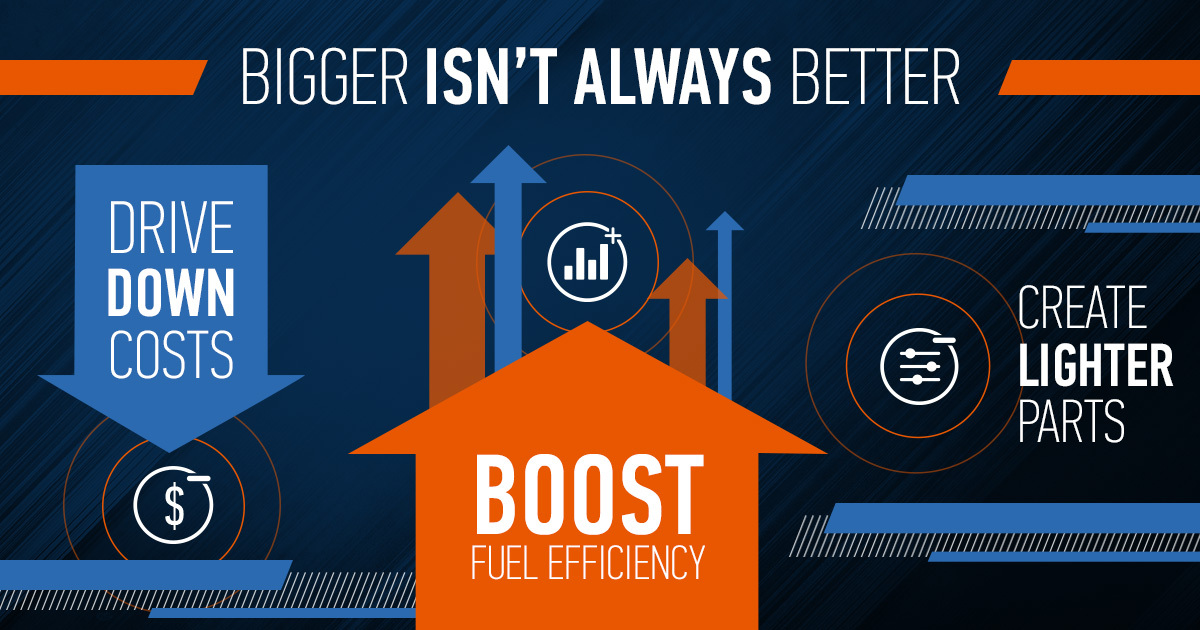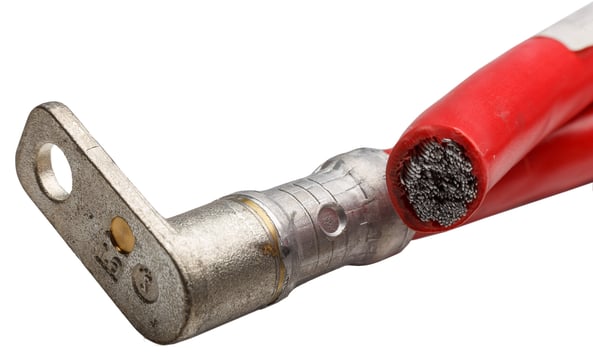
When it comes to aerospace and automotive applications, bigger isn't always better. In fact, companies invest a lot of time and money into figuring out how to trim the weight of their critical parts.
Fortunately for them, many major manufacturers have already discovered friction welding, a process with a proven track record of lightweighting.
So why does lightweighting matter, how can MTI help and what's the easiest way to get started? Read on to learn more about our role in the growing trend of shrinking!
WHY DOES IT MATTER?
Simply put, the more a vehicle, aircraft or spacecraft weighs, the more fuel it needs to operate. So, if we can reduce the overall weight, we reduce the amount of fuel needed, effectively driving down costs and boosting fuel efficiency.
Whether you're driving a Class 8 truck and trailer, flying a plane or embarking on a space mission, there is a strict on-board weight limit that absolutely needs to be met to ensure safe travel.
Lightweighting would be attractive to a trucking company, for example, because a lighter truck can carry more cargo per trip while saving fuel and avoiding extra wear and tear on the truck itself.
Air carriers are also interested in lightweighting because extra weight trimmed from the aircraft can be used in exchange for longer-distance flights and carrying more passengers or cargo.
And as for space travel, if a spacecraft is made of lighter materials, the payload is lighter -- ultimately requiring less fuel to get into orbit.
So how does MTI help dozens of companies achieve lighter parts?
HOW FRICTION WELDING HELPS GET IT DONE
One of the easiest ways to cut down the weight of a part is to switch to a lighter material.
Take a battery cable for example.

At MTI, we combine aluminum and copper to friction-weld this popular automotive part. Copper provides a high electrical conductivity with little resistance but it's not necessary to make the entire cable out of copper for it to be effective. So, we can use aluminum, a more lightweight and durable material, to reduce the overall weight of the cable.
It's important to know this type of weld may not be possible with other types of welding. One of the biggest advantages of friction welding is the ability to join a variety of dissimilar metals, further opening the door to lightweighting for all types of industries and applications.
AN EARTH AND WEIGHT-SAVING METHOD
Friction welding doesn't just save weight -- it saves the environment, too.
The process of friction welding does not require the use of fillers or flux, which both add extra weight to a part.
Think of it this way: if we were to weigh a part that was joined using friction welding and then we weighed the same part joined with a more traditional method that did require those fillers, the friction-welded part would weigh less!
Omitting those fillers is much gentler on the environment because it cuts down on consumables and the energy required to take a part from concept to completion.
The lightweighting possibilities are endless with friction welding but there are some applications we see more than others.
POPULAR LIGHTWEIGHTING APPLICATIONS IN FRICTION WELDING
- Aluminum driveshafts
- Hollow piston rods
- Hollow diesel engine pistons
- Hollow engine valves
- Hollow stabilizer bars
- Hollow aluminum wheel rims
A NEW, INNOVATIVE SOLUTION FOR LIGHTWEIGHTING
Don't let its 122,000-pound weight fool you, MTI's latest friction welding machine was designed with lightweighting in mind.
The innovative machine specializes in near-net shape parts, further reducing the amount of wasted material. Plus, it's equipped for all types of bimetallics, which, as we described, significantly aid in the lightweighting process. Before this machine was up and running at Lightweight Innovations for Tomorrow (LIFT) in Detroit, Michigan, North American customers would have to travel to Europe for full-scale development work.
Click here to learn more about North America's largest linear friction welder.
About MTI
MTI has established itself as a leader in friction welding, including Rotary Friction, Linear Friction, Low Force Friction, and Friction Stir Welding technologies. In addition to contract manufacturing services, MTI has delivered machines to Boeing, GE, Rolls- Royce, Pratt and Whitney, Federal Mogul, and many of their tier one suppliers. A family owned business founded in 1926, MTI employs 185 people in their South Bend, United Kingdom, and Slovakia locations.
For more information on MTI and its family of world-class friction welding technologies, visit www.mtiwelding.com.
Twitter: @mtiwelding
LinkedIn: https://www.linkedin.com/company/manufacturing-technology-inc
 MTI UK
MTI UK  FWT
FWT